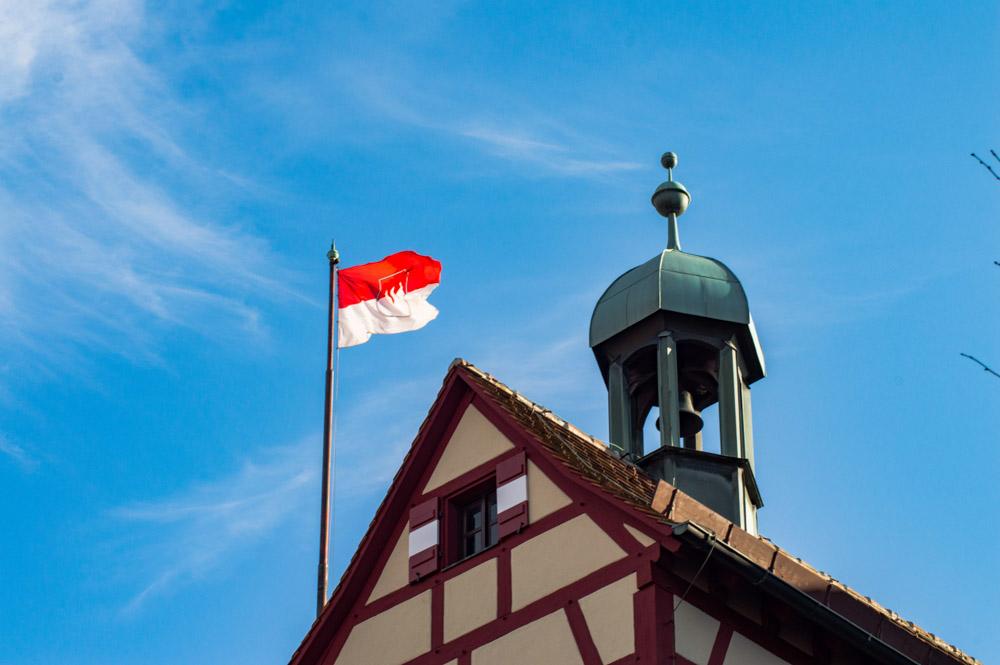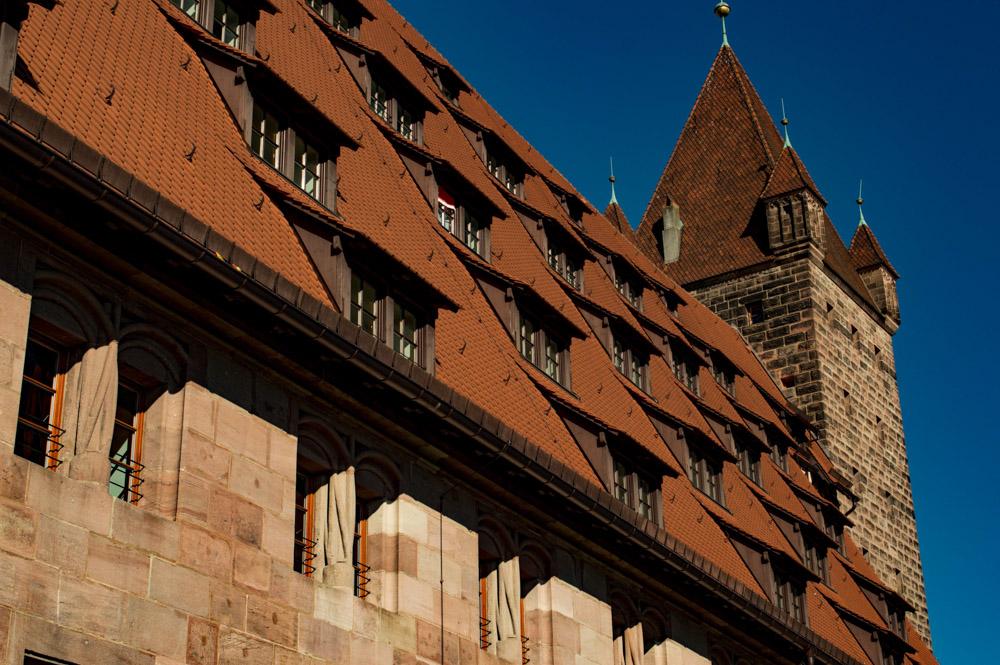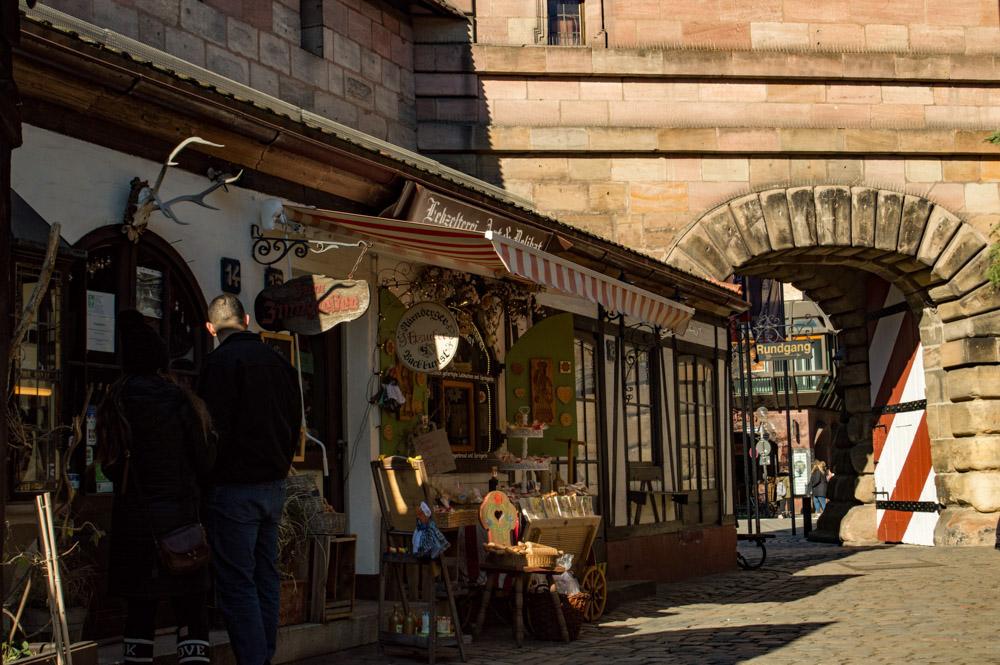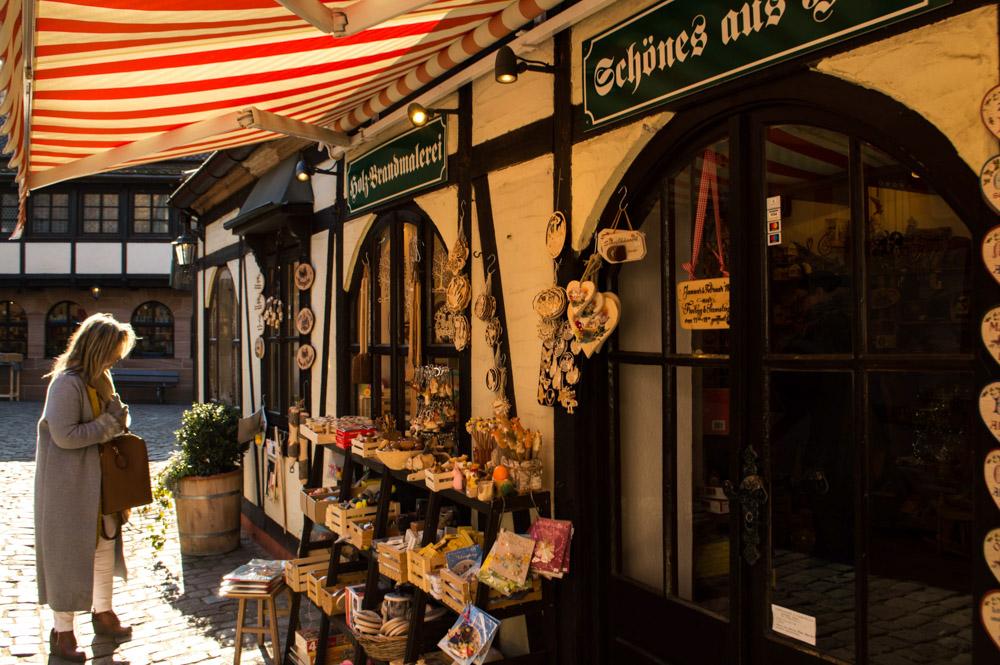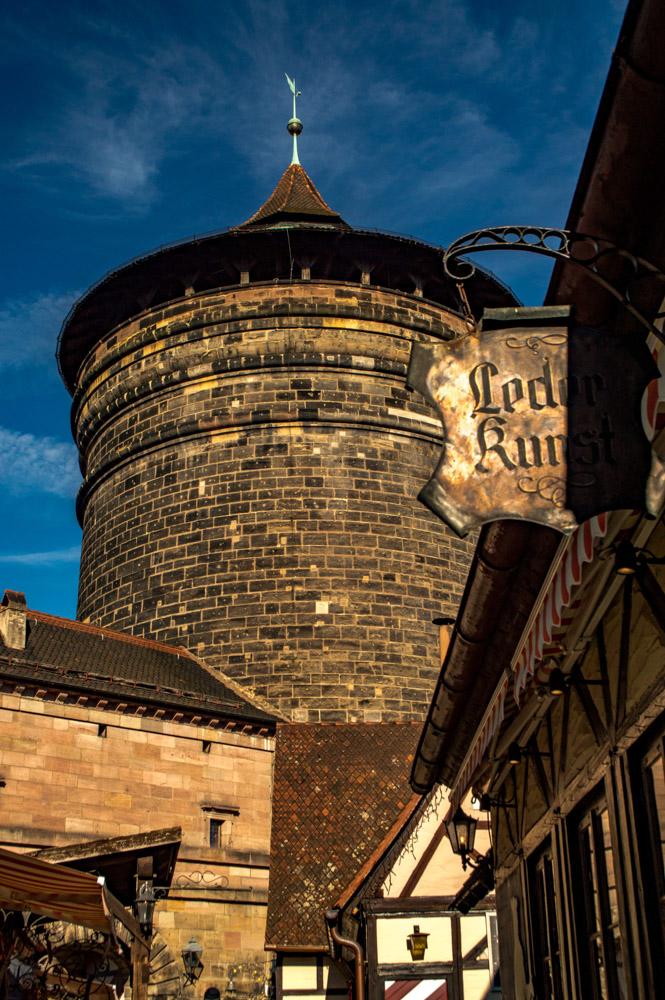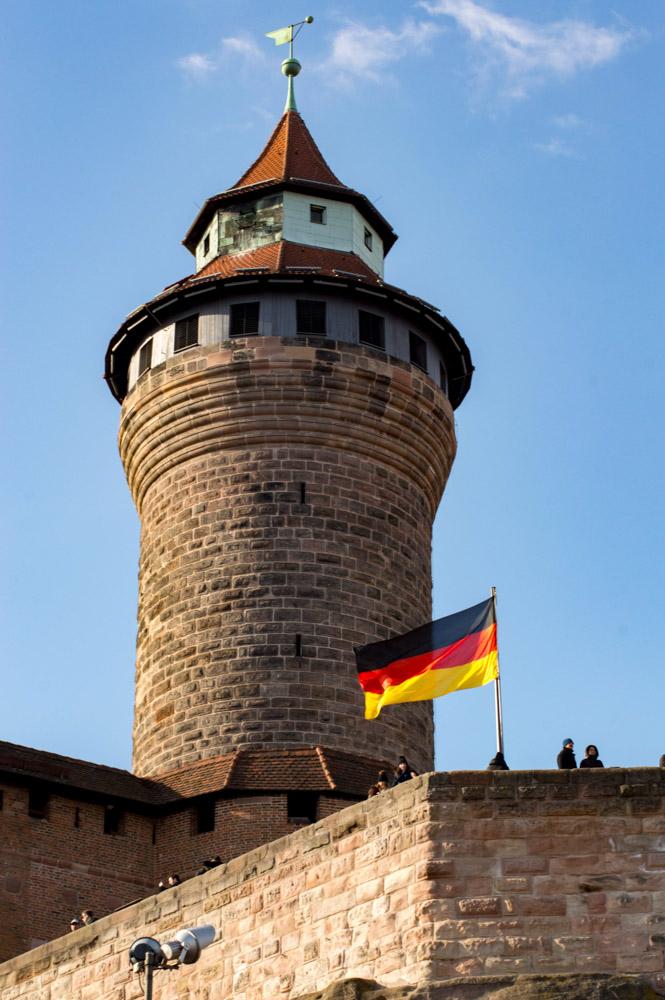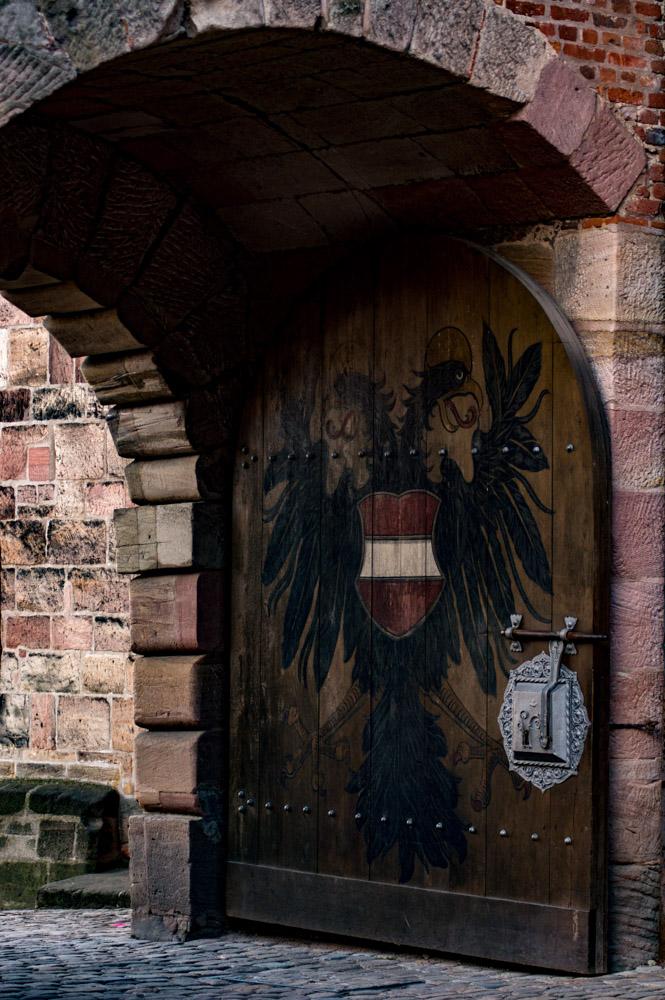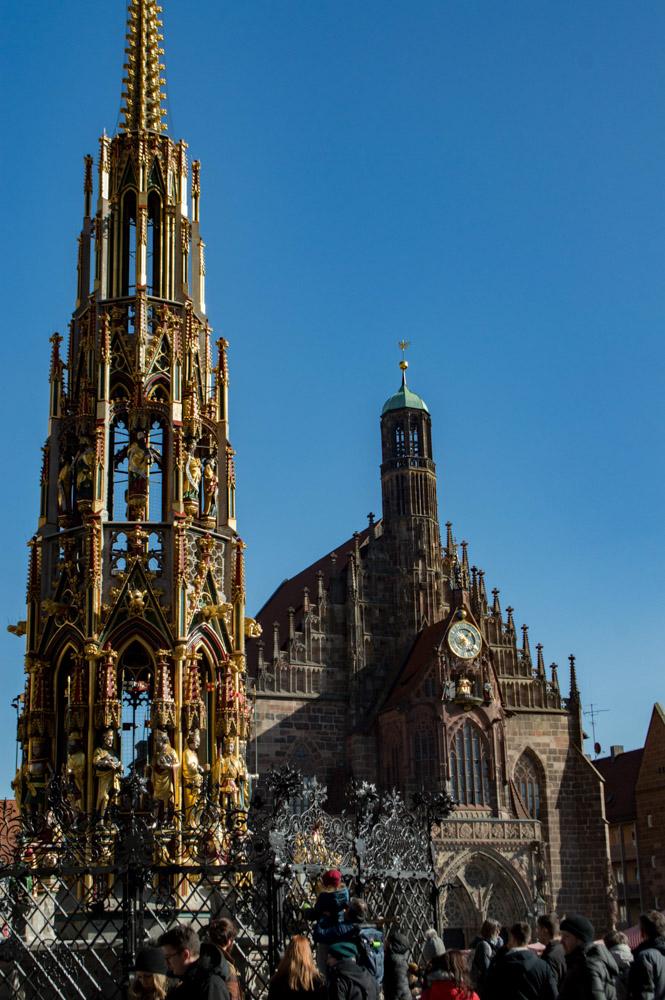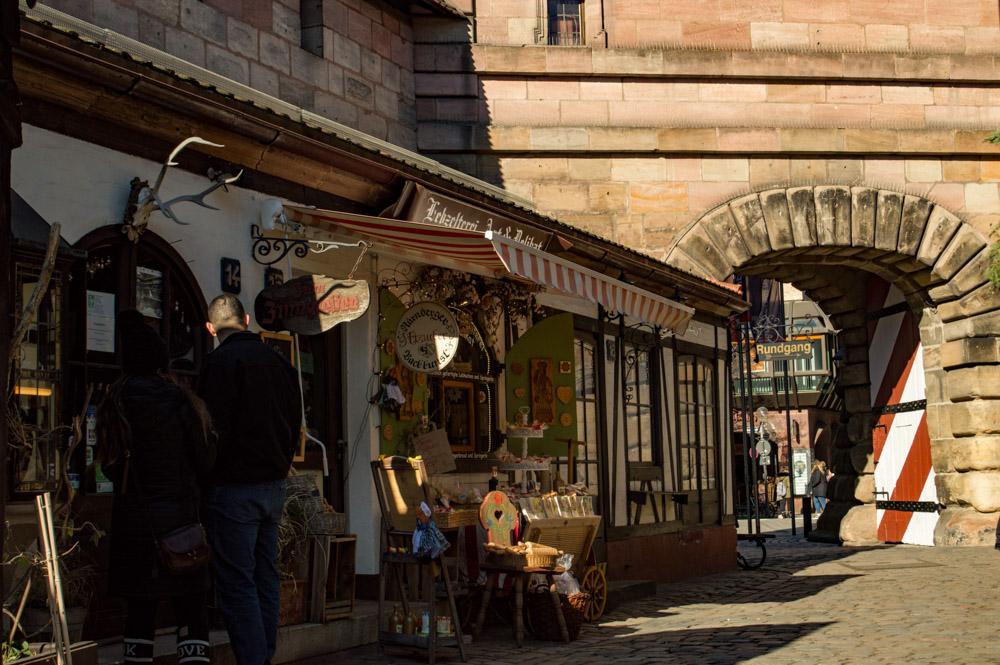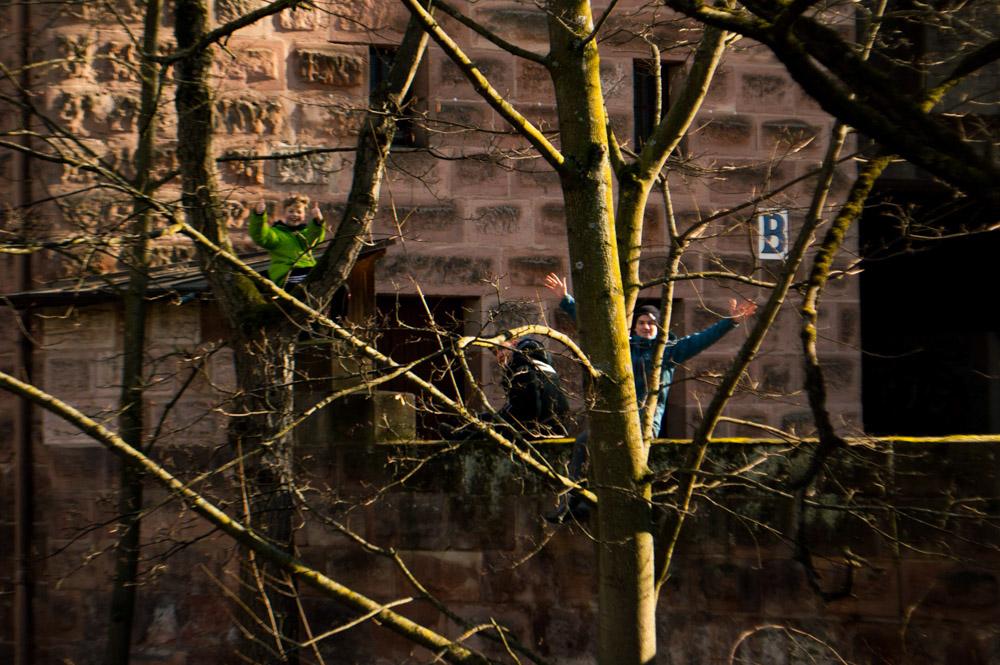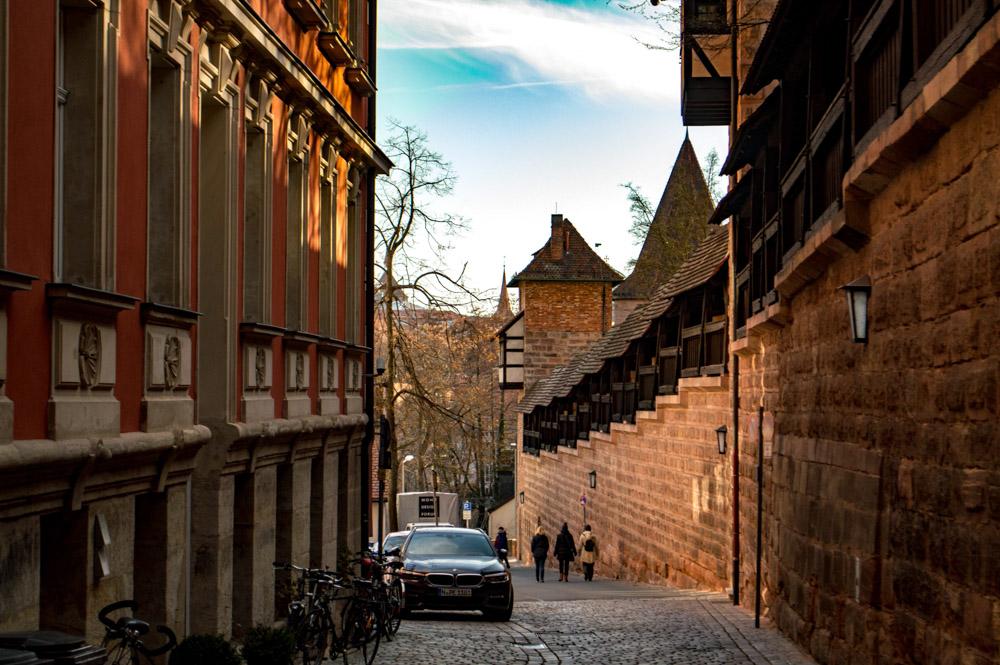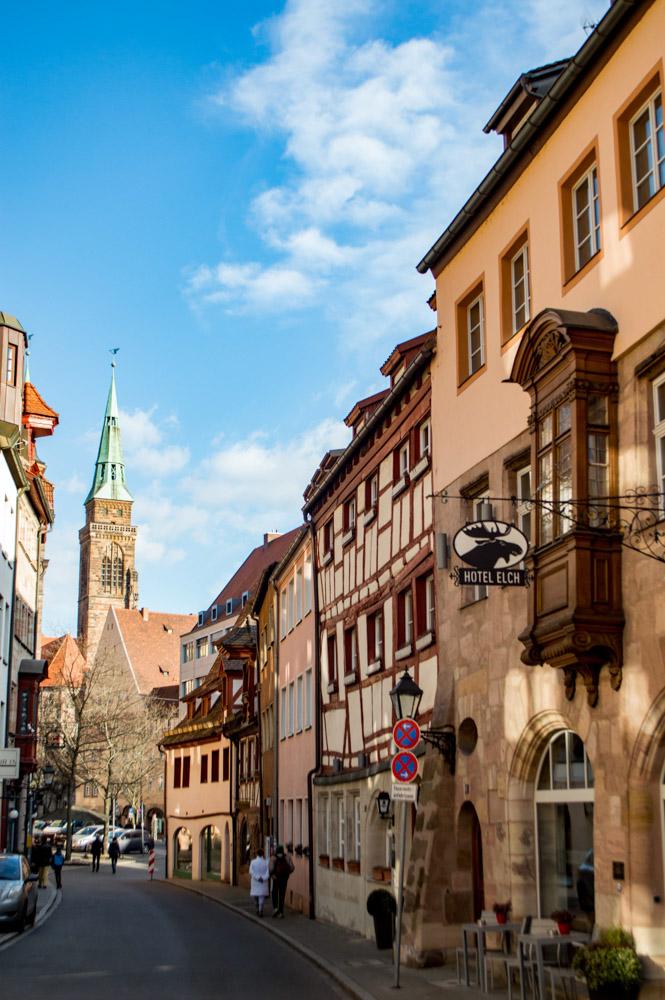My endearingly stereotypical Slovak family seemed in little rush to see the plentiful sights of Nuremberg. Beneath spires and a castle, over the Pegnitz river and cobblestone streets, they elected to sit and experience the soul of the city… in their own way. In bars and cafes. I was granted freedom to explore, so it was no detriment to me, but I still chuckle at their predictably Slovak behavior.
I never expected my family to take as obsessive an interest in Germany as I did. While it’s an entirely different nation, it is still Europe and not nearly as fascinating to a Slovak as I find it. Nonetheless, as 11 o’clock came and went and we had still to leave the city of Freystadt where we were staying, I got a bit antsy. My parents and a Slovak friend of theirs who lives in the town, relaxed around a table of sweets and steaming coffee mugs for over an hour and a half before finally departing. At noon, we finally walked out of their friend’s apartment. He would be accompanying us for the day, as tour guide and fluent speaker of German. His offer to drive us there—appealing at first as I marveled as his fierce, red Ford GT—proved to be one of my most uncomfortable travel experiences ever. The two towering Slavic men sat in front, their seats rolled back as far as they could go and still cramping their legs! That put my petite host mother and I in back. She fit perfectly and seemed comfortable the entire way… Average-build me, on the other hand, almost had to do the splits to fit my legs behind the seat in front of me and there simply was not room for my head! As it happened, I spent the following thirty minute drive with my head either resting on my shoulder or lying against the back dash, staring up at the sky through the rear window.
Once in the city, our first stop was the 14th century Schöner Brunnen fountain. This structure, shimmering, golden, and looking quite like the spire of a cathedral, climbs over over the market stalls which populate the main square. Dozens of examples of Christian iconography decorate the colorful exterior of this fountain and I can only imagine its beauty in the warmer months, when the water cascades from each tier to the pool below.
The sights of Nuremberg belay their history, and this fountain is no exception. The entire city once fell to ruin, shattered and burning, the rubble itself simultaneously creating and burying its victims. This wasn’t some medieval siege, no the strong walls and castle defended against those for centuries. An unstoppable barrage of allied bombs, however, decimated Nuremberg near the end of the Second World War, which was then an important sight for German military production. Within a single hour, nearly 90% of the center center had been reduced to husks and piles of debris.

The symbolism of this wasteland in the wake of the Earth’s most devastating conflict was not lost on the Allies, who chose one of the few remaining buildings, the Palace of Justice, as the sight for the hearings against Nazi war crimes. In the infamous Court Room 600, Nazis and their affiliates were tried and sentenced for the horrors committed during the rise and fall of the Axis.
In the wake of the war, Nuremberg was rebuilt, true to the city which had stood before it. That means the old town, which to this day looks and feels ancient, is in fact less than a century old! And I cannot stress just how ancient it does feel. Nowhere more so than the Handwerkerhof. As you might be able to infer, the name means something like “Craftsmen’s Market” These little cottages and stalls, nestled into a corner of the old city walls, are dedicated to the handmade crafts and tools of Nuremberg’s long history.
It was an unbelievably atmospheric space. As I stared up at the massive stone tower, I imagined I would see carriages and peasants flowing through the gate below. There would be armed guards watching the crowd and inspecting goods, performers and farmers and merchants all mingling before they spread though the city about their business. Instead, I found crowds of tourists, noisy cars and electric trams—but that’s what Europe is! Ancient history and modern innovation fight for your attention, flashing in and out of focus constantly. For me, those brief moments when I can feel history in the present, they are why I love Europe and why I love traveling.
Nuremberg Castle was another one of the places which evoked this sensation. Certainly, throngs of tourists now marvel from the vantages that guards once patrolled. Yet, this marvelous structure is so faithfully preserved that even the noisy masses seemed to fade into the background.
One of Europe’s stoutest castles, Nuremberg Castle served as an imperial residence for Holy Roman Emperors (German kings after their papal coronations) throughout the Middle Ages. These kings did not hold any permanent capital, but moved on a whim throughout their kingdoms to different fortified seats. Nuremberg was a frequent choice for these powerful men, with some inhabiting it multiple times across their reigns. We visited the castle for about thirty minutes just after arriving in the city, but the chilly wind blew my family and their friend into a cafe to warm up. There they spent about two hours, graciously allowing me to explore the city in the meantime. I visited the Handwerkerhof then moved on to some less traveled streets and parks just beside the main old town. The old city wall seemed entirely intact and it stood impressively tall! In its time, I could hardly imagine there was a force which could surmount such defenses. Below are an assortment of photos from this walk, including one from a humorous exchange between me and some boys lounging beside the river and wall:
My stroll concluded near the cafe, where I met my host family and we immediately proceeded to lunch. (They spent about 15 minutes outside between the cafe and the restaurant.) The meal was a plate of traditional German sausages, mustard and bread. Simple, but good. Another ride in the hot-rod clown car brought us back to Freystadt where we spent the rest of the day relaxing. It was not as deep a delve into Nuremberg as I had hoped for, but it was pleasant and I am glad I researched its history before visiting.
Signed,
Andrew
